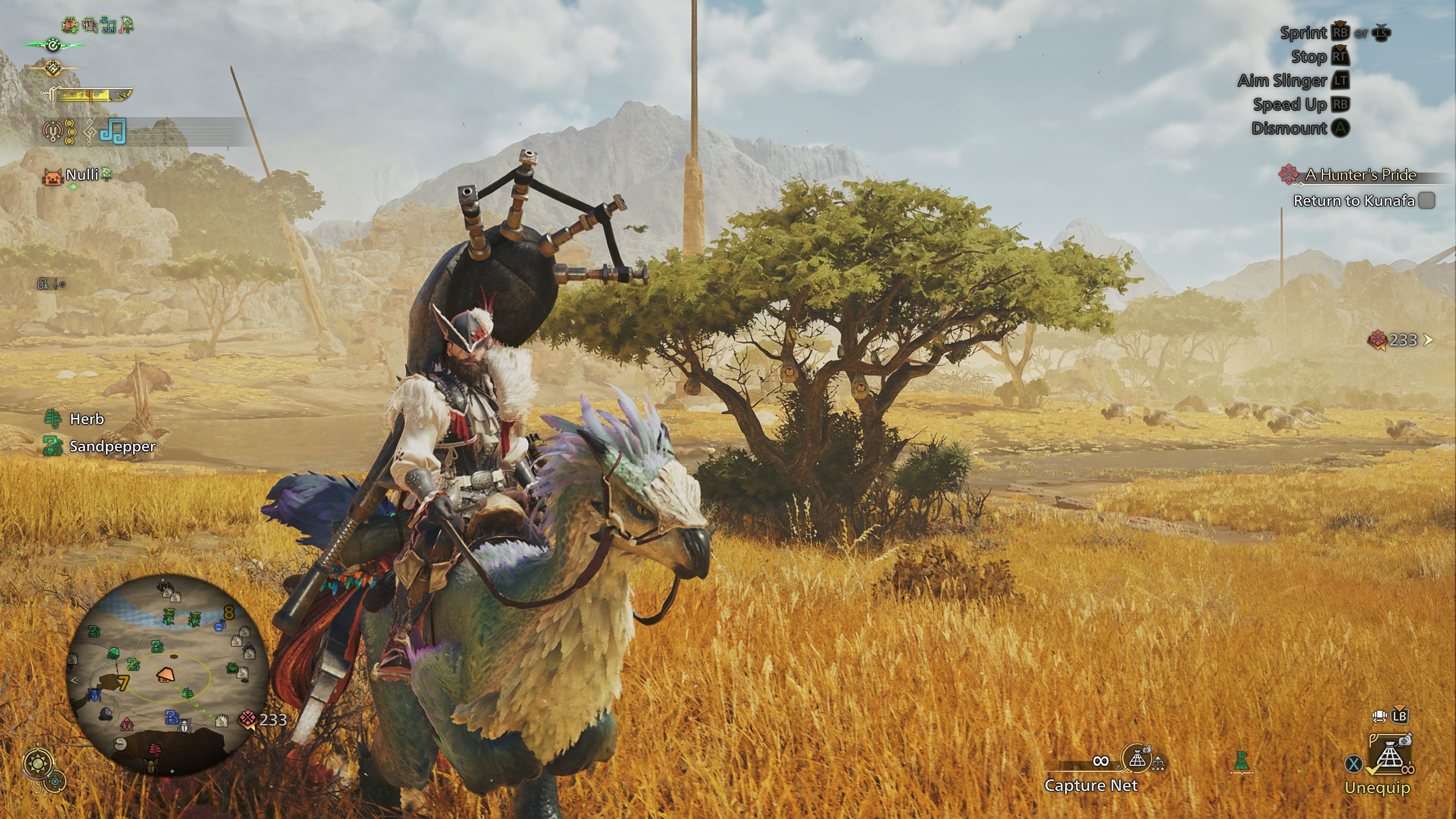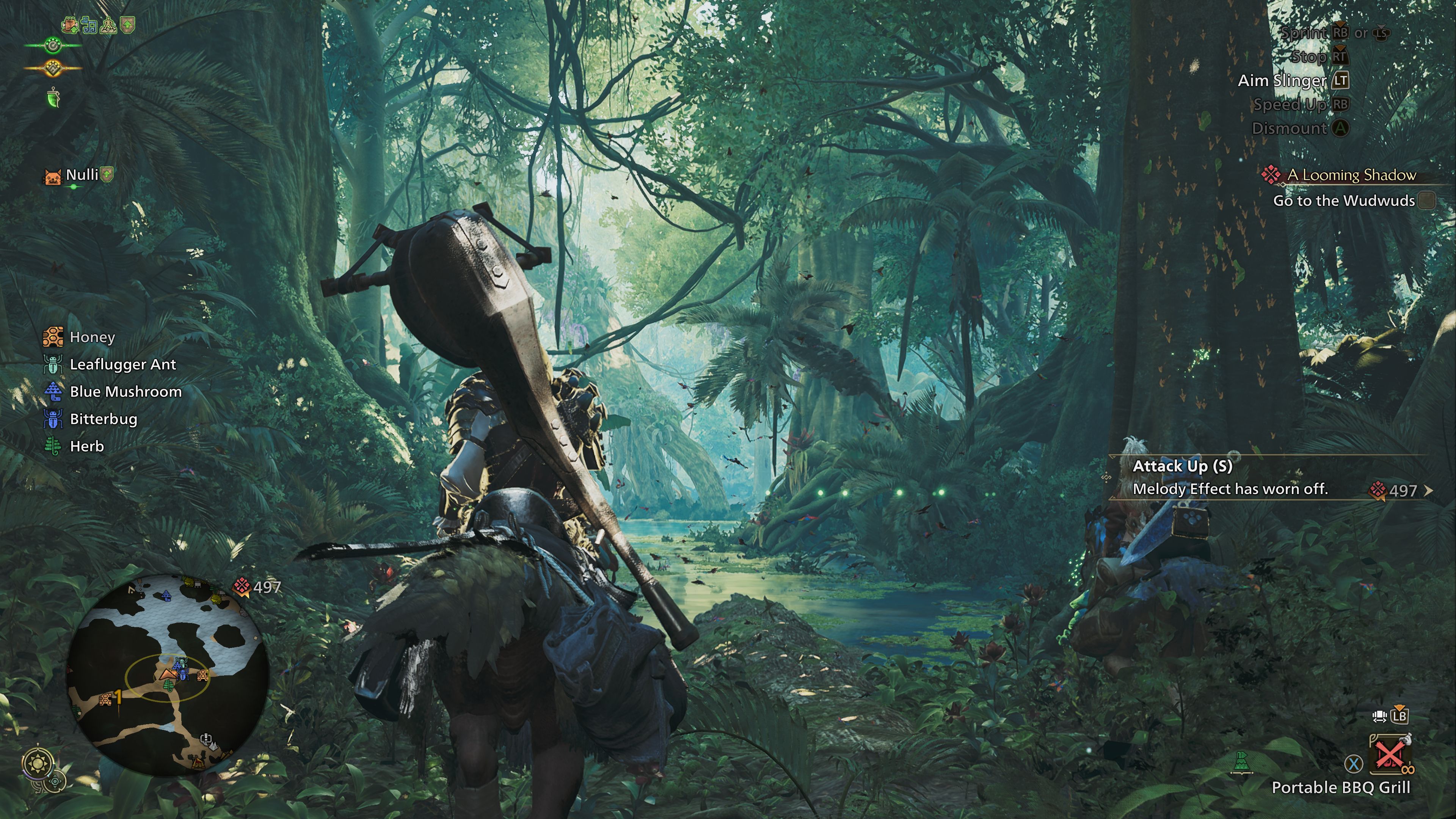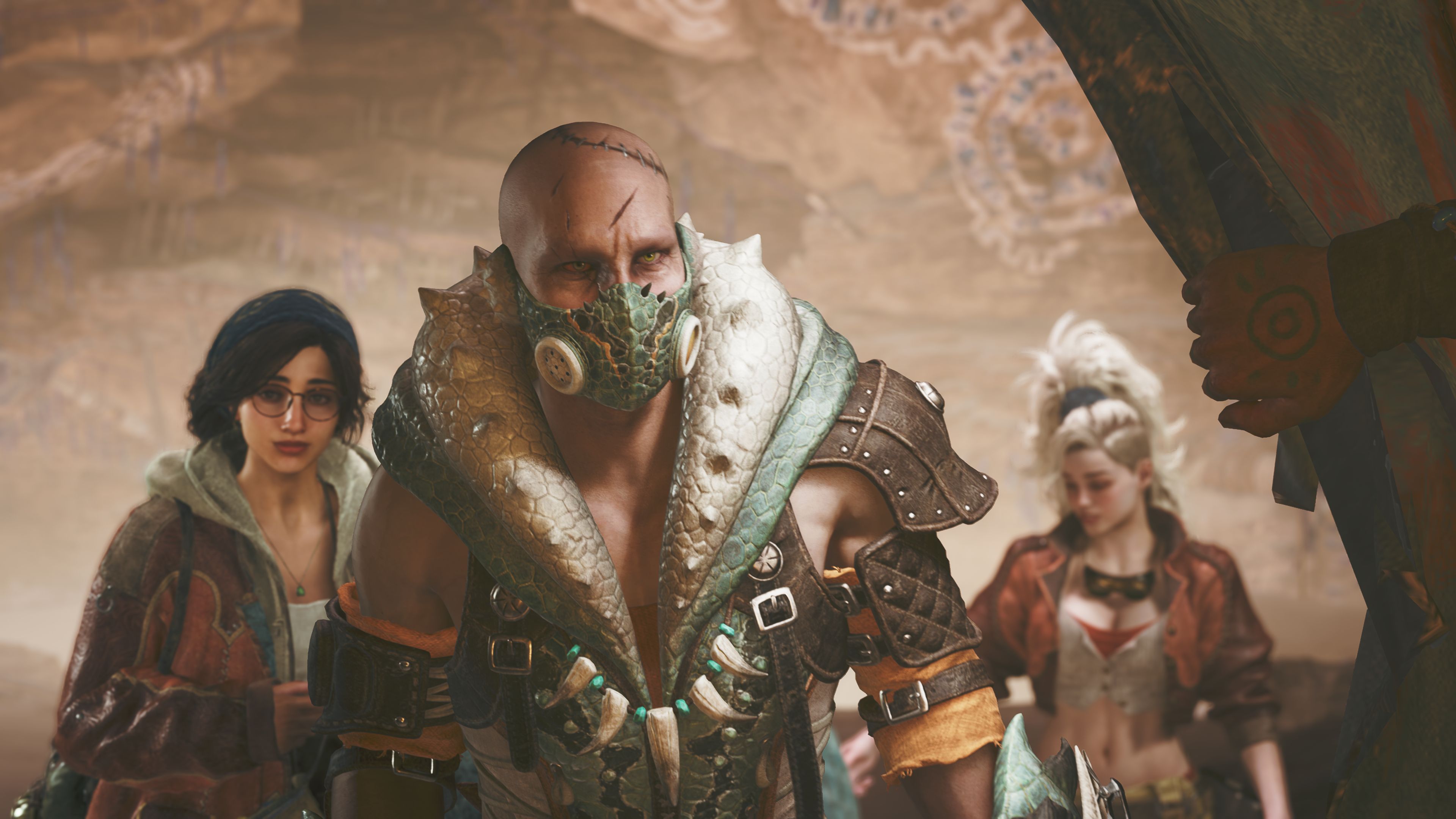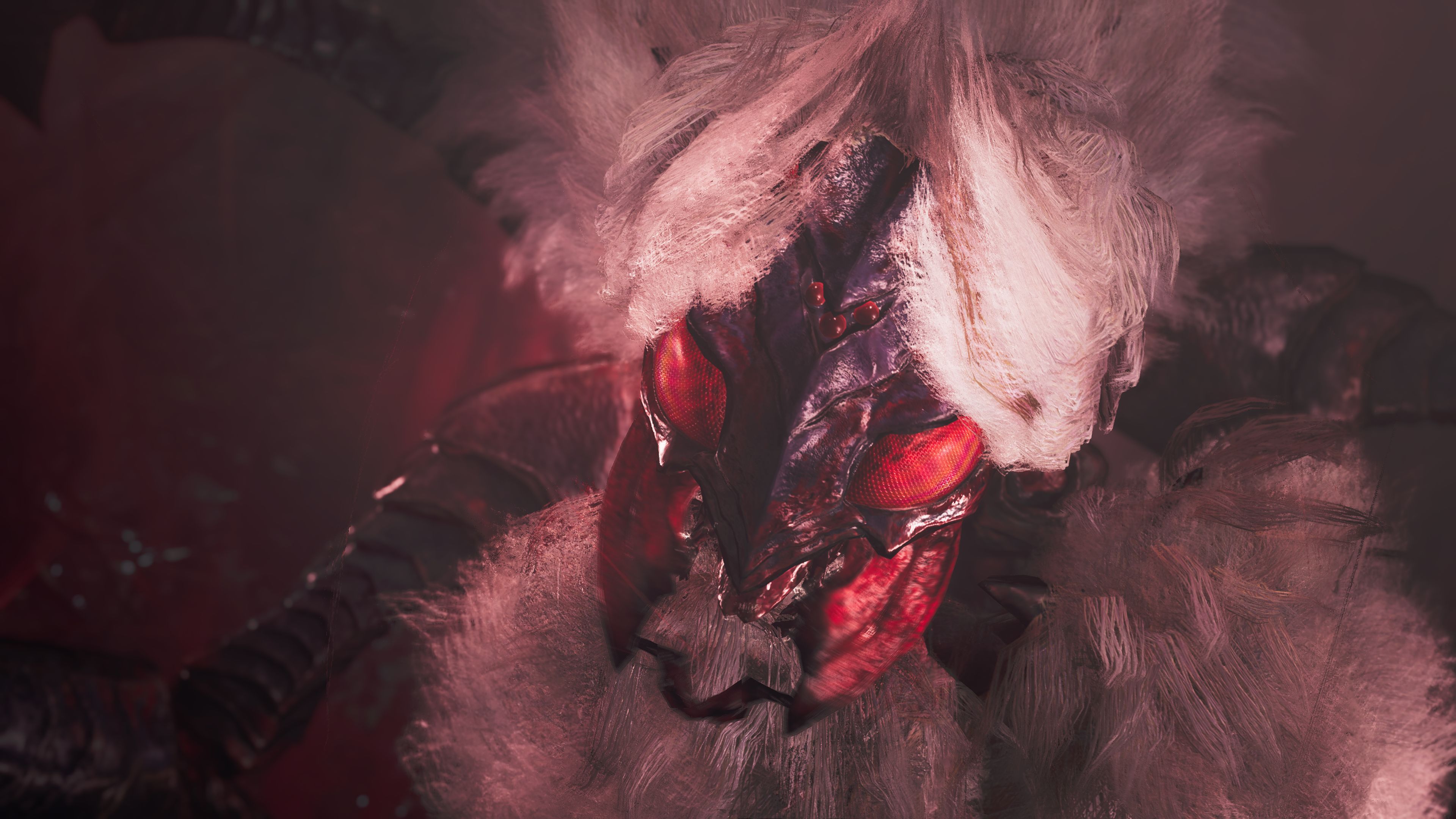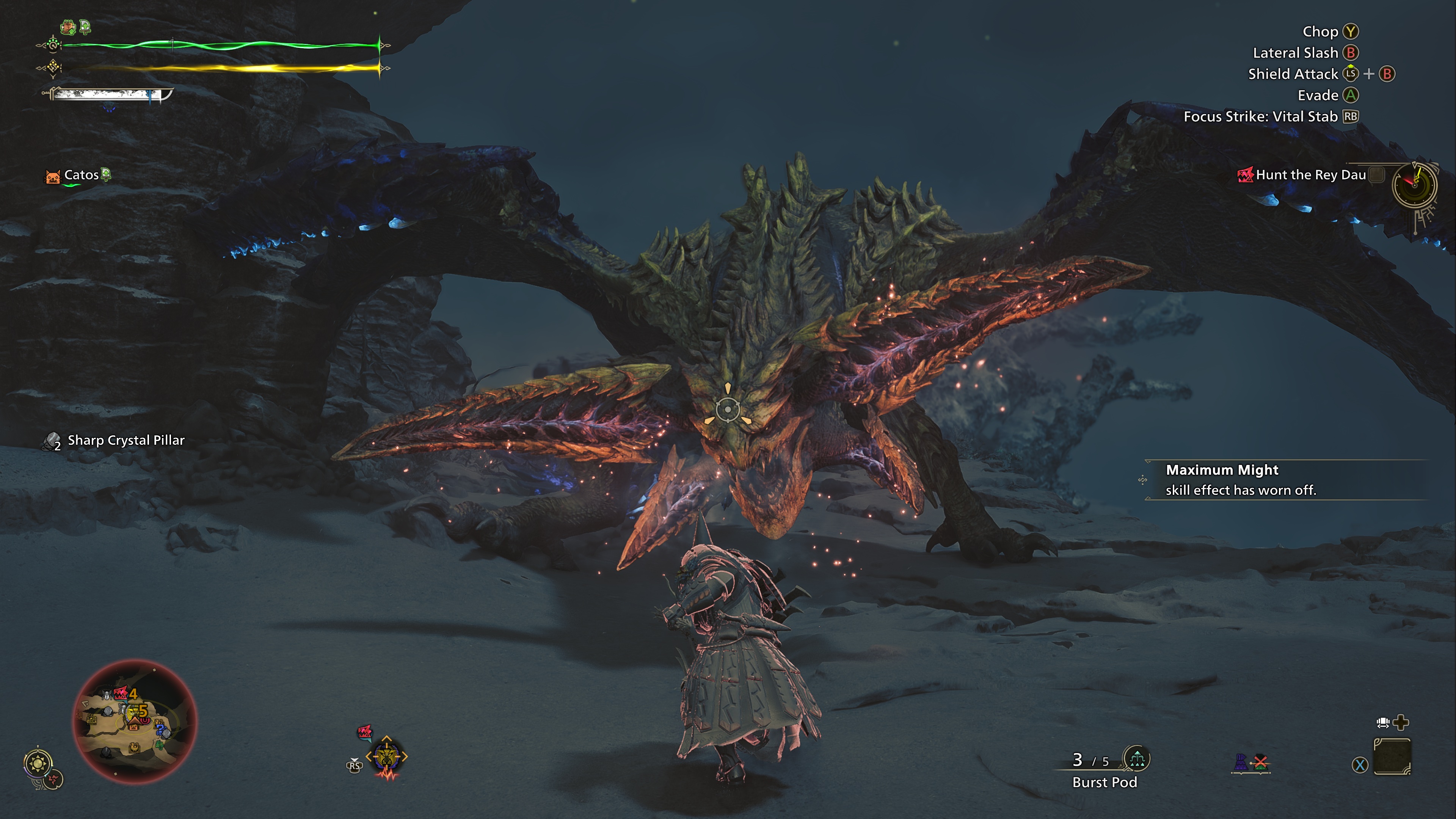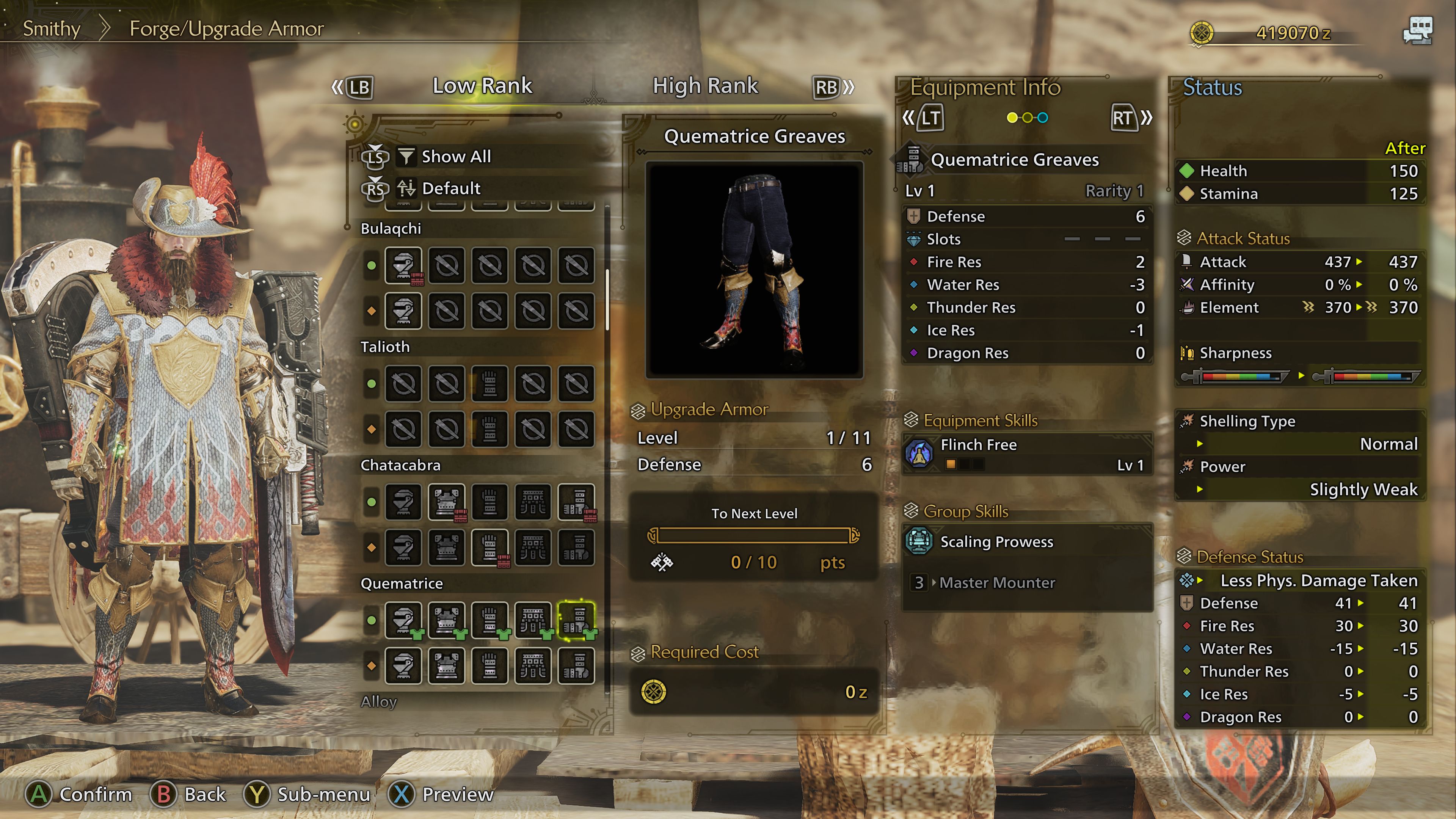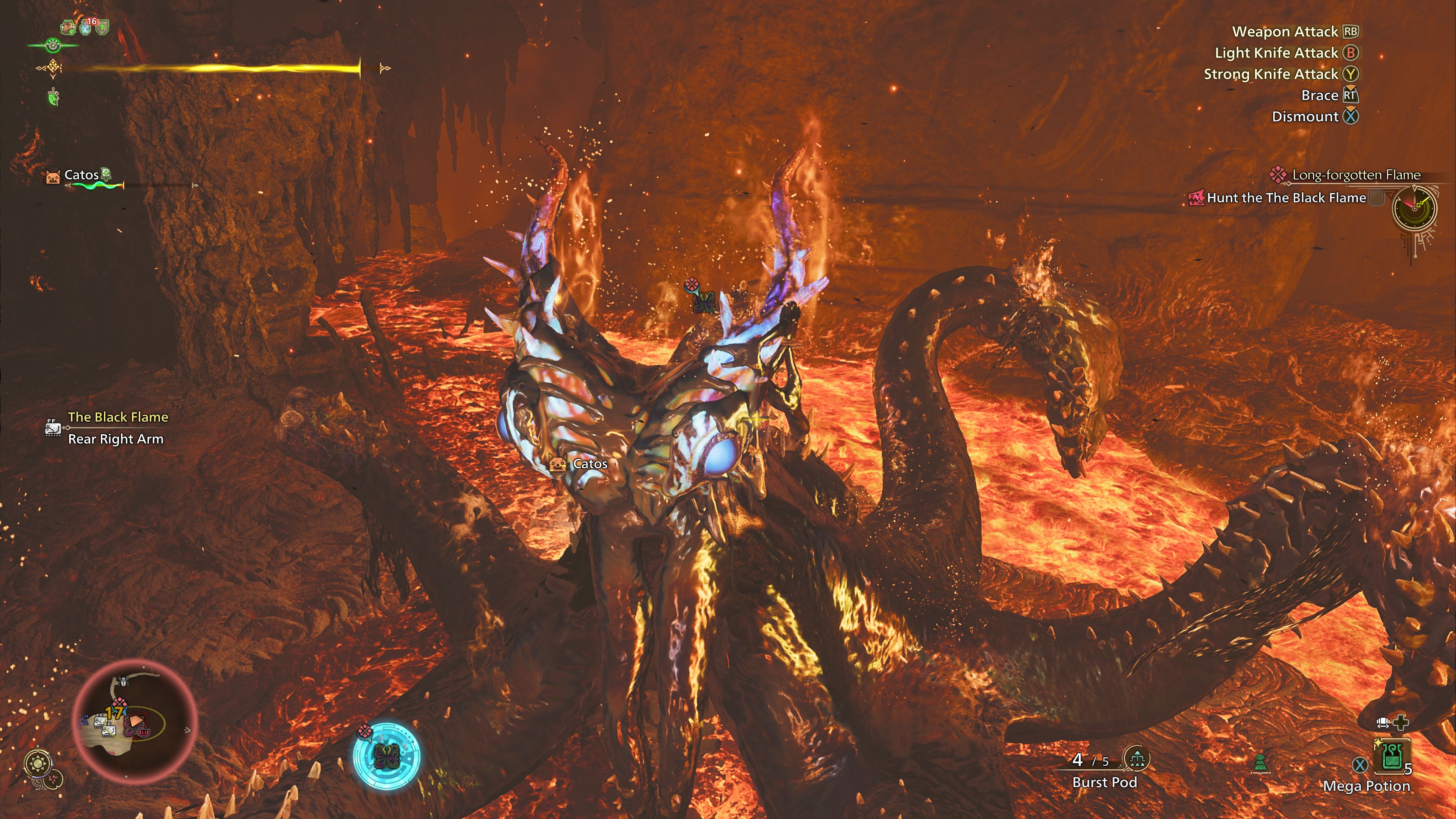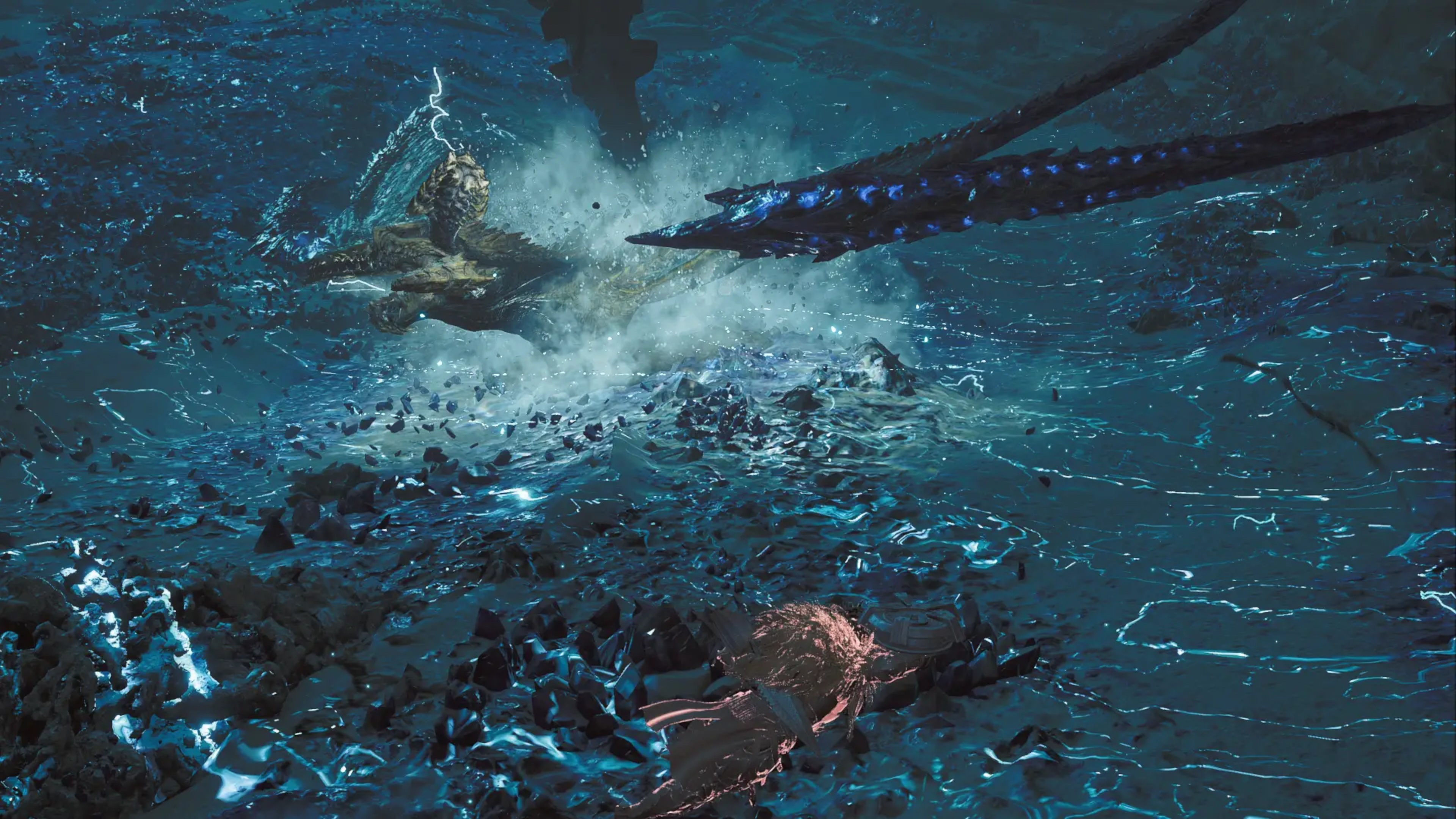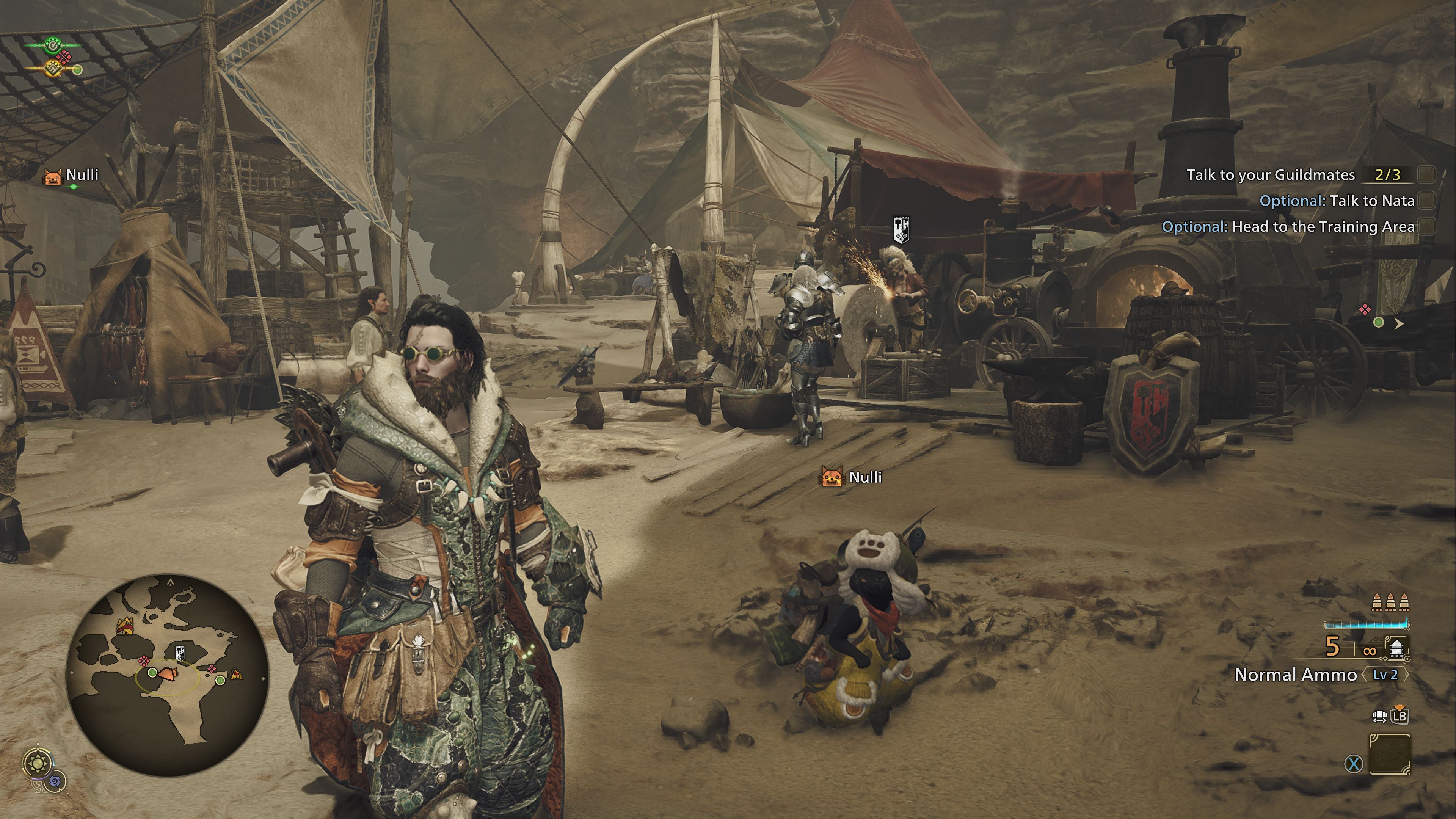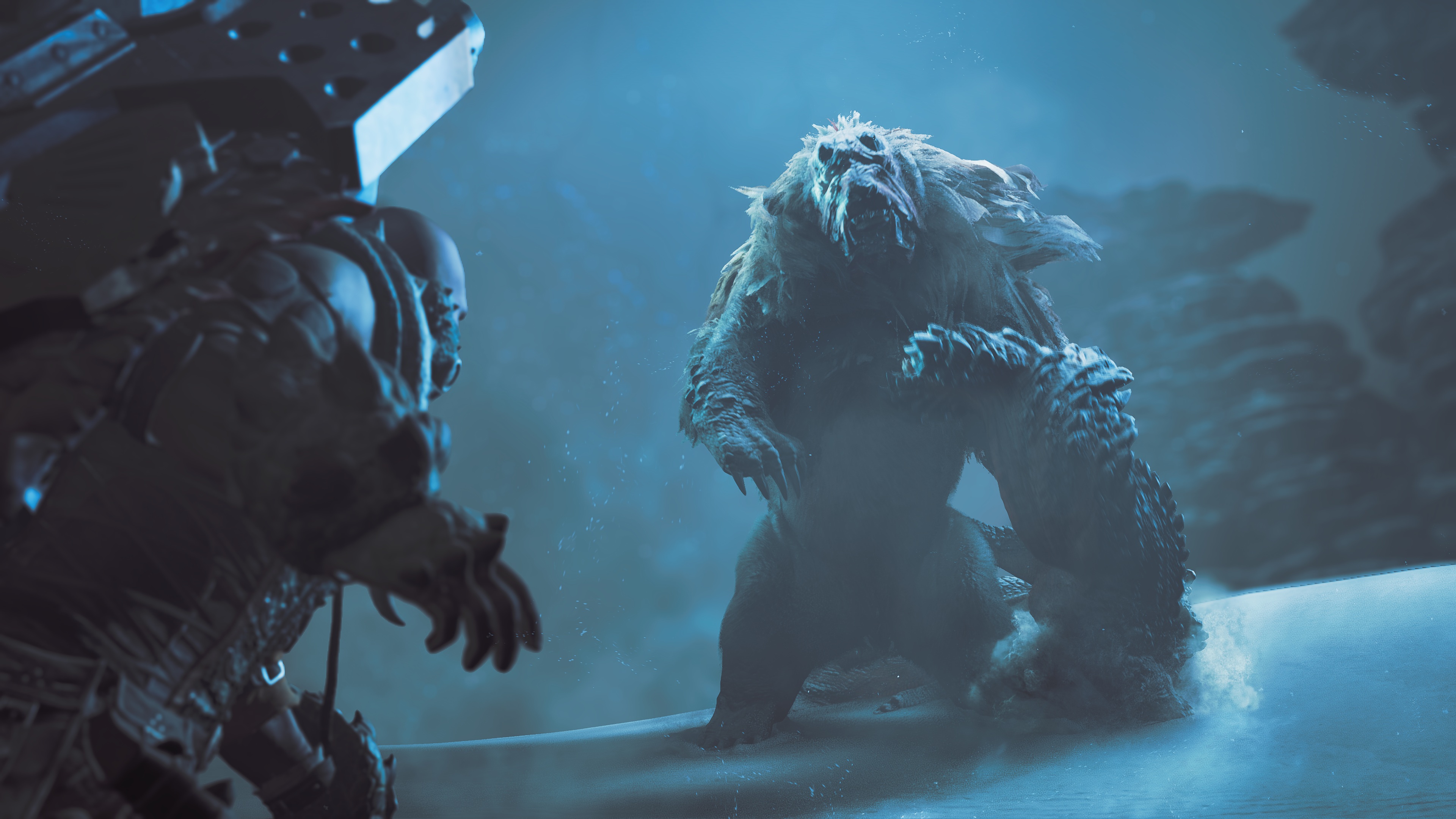Why you can trust Windows Central
Our expert reviewers spend hours testing and comparing products and services so you can choose the best for you. Find out more about how we test.
Monster Hunter is a franchise that is near and dear to my heart. When I first moved country fully several years ago, it was right around the time Monster Hunter World launched for Xbox One. I had always been aware of the franchise, but never had a system upon which to play it, but with Capcom bringing the franchise to Xbox for the first time, I was immediately and irrevocably hooked.
It became the primary way me and my friends and family back home socialized. The sheer difficulty of the game and overcoming that challenge created epic multiplayer moments that I hadn’t felt since the early World of Warcraft days. Defeating Arch Tempered Nergigante for the first time, raiding Kulve Taroth with the squad, and exploring the massive expansion of Iceborne all represent incredibly fond gaming memories.
It’s against this high bar that Monster Hunter Wilds arrives in 2025, launching February 28 for Xbox Series X|S, Windows PC via Steam, and PlayStation 5. The various open beta tests were incredibly promising. Wilds’ new open-world format, complete with the new Seikret mounts, dynamic weather events, and all-new combos and abilities, represent a ton of reasons to be excited for Wilds. Over the past week, I’ve been playing the game for review, and after felling every monster the game has to offer, I can’t help but admit I feel somewhat dejected.
Monster Hunter Wilds is an amazing basis for something that could evolve to be a franchise high point, but I can’t help but feel that the game is shipping without proper testing. Despite having amazing new monsters, incredible environmental design, and fun new weapon abilities — it’s simply far too easy, even for casual players. It’s a particular problem in a game like Monster Hunter because it undermines aspects of the game’s premise, core systems, and long-term potential.

Monster Hunter Wilds: Graphics and Sound
Monster Hunter Wilds
Genre: Action RPG
Multiplayer: Yes, 4-players online with cross-play
Developer: Capcom
Xbox Game Pass: No
Platforms: Xbox Series X|S, PS5, Windows PC
Full completion time: 30-40 hours.
Price: $69.99
If there’s one aspect of Monster Hunter Wilds that sets a high bar, it’s in the visuals department, at least on Xbox Series X. The open beta had created some jitters about performance, but I’m happy to report the game offers a good and stable experience across all graphics settings. You can sacrifice visual fidelity for 60 FPS, use a “balanced mode” to hit 40 FPS on FreeSync monitors, or gun for a resolution-first 30 FPS mode. I played the game primarily at 40 FPS, although 30 FPS offers a really impressive cinematic experience that really showcases the game’s weather effects.
Indeed, one of Wilds’ big new signature features is dynamic, evolving weather effects. It’s incredibly exciting and epic when a Mad Maxian wall of sand rolls towards you in the desert, transporting you into another dimension, wracked by gigantic lightning bolts and bristling static. The forest region transforms from a stagnant, static swamp to a fresh water flood when the rains come, and then a colorful, blooming garden when the deluge subsides.
I do think that perhaps texture compression is ramped up a bit in Wilds to accommodate the game’s lighting effects and generous draw distance, but it’ll be up to you to decide if the trade-off is worth it. I will say that on Xbox Series X, texture popping remains an issue when turning the camera. Hopefully further optimizations can improve the experience there.
Some technical issues aside, the art direction is absolutely on point in Wilds, where the environmental design well and truly showcases the best of what Capcom has to offer.
Where Wilds’ art direction continues to shine is in monster designs. Rey Dau’s alarmingly alien cries and lightning railgun face is an exciting example of Monster Hunter’s ecological realism that blends the fantastical in an uncannily believable way.
Nu Udra is a jaw-dropping animation triumph, with its deadly undulating tentacles plucked straight out of a Cthonic nightmare. There are tons of returning classic monsters, too, that I naturally won’t spoil here, but it’s exciting seeing certain critters return after not being seen for generations, recreated with modern visuals and flair.
Monster Hunter Wilds also takes a step up in the cinematics department, too. The game offers a more intimate story experience than some of its predecessors, and the expressive facial motion capture does help make the characters more memorable and fun to engage with. How engaging is the story overall, though?
Monster Hunter Wilds: Story
“Story” has never really truly been the focus of Monster Hunter games, but it does feel like Capcom is exploring building upon the game’s back story and lore to add further depth as the franchise grows. Looking at the pre-orders on Steam, there’s every reason to think Monster Hunter Wilds could end up being the biggest opening for the franchise so far and will also most likely be the first game in the franchise for many players.
Monster Hunter Wilds takes place in a new Eastern region called The Forbidden Lands, where a new guild commission has arrived to survey and research the area. The guild had assumed for years that the land was uninhabitable, dominated by insanely dangerous monsters, and opted instead to survey the area more safely from the air.
However, upon arriving, the commission spots a young boy who has become lost in the dunes, which throws what the Guild thought they knew about the region into question. After saving the disoriented lad, Nata, the guild discovers there’s far more to The Forbidden Lands than they realized. Nata has no idea which direction he entered the desert from, and helping him find his way back home forms a large part of the story.
I’m sure some fans will find Nata’s childish frustrations at times a bit grating at times, but he does evolve as a character throughout the story, and exploring his origins reveals intriguing new lore with broad implications for the entire Monster Hunter universe.
Indeed, the inclusion of returning characters like Gemma (formally known as ‘Little Miss Forge’ from Monster Hunter 4), now all grown up, suggests to me that Capcom is exploring adding deeper narrative depth to the franchise, and for the most part it works quite well in Monster Hunter Wilds. It is still relatively “soft” and arguably forgettable as a plot, but as I mentioned earlier, “story” has never typically been the focus of these games. The lore implications are perhaps the most interesting aspect of the game’s story, but I’ll leave those out for fear of spoilers.
What the story does do well is flesh out The Forbidden Lands’ new areas, monsters, and characters, giving it a good foundation upon which to build. The guild doesn’t have a strong foothold in the area, and what human tribes do exist are small in size and scattered in number.
The constant monster attacks and erratic weather have stifled technological advancement, but the locals know the land extremely well and form a symbiotic relationship with various creatures for mounts, food, and protection. The player can take advantage of some of these story elements in a gameplay context, trading for ingredients and acquiring Seikret mounts to traverse the game’s large world.
The remoteness of the region and its story setting, unfortunately, means that the guild’s resources are incredibly limited. I was saddened to find that there’s no canteen facility in Wilds, for example. There’s no botanical research farm for growing crops and materials either. The lack of a main “central hub” detracts from the charm, I would argue, with villages feeling small and anemic in flavor compared to World. Perhaps it fits the story and setting, but it’s disappointing in practice.
“Disappointing in practice” also sadly describes Monster Hunter Wilds gameplay, as painful as it is to admit as a fan. The foundation is absolutely there, but some poor design decisions and, possibly, poor High Rank testing puts Wilds on the backfoot out of the gate.
Monster Hunter Wilds: Gameplay
Monster Hunter is a long and storied franchise, meaning different things to lots of different people. I came in at Monster Hunter World, which friends who are fans of the classic games often described as being “too casual” and “too easy.” I certainly never felt that way about it when I was playing it for the first time, and I appreciated it for onboarding me gently into the franchise — but therein lies the challenge of developing games that have such a long legacy.
How do you satisfy existing fans’ expectations while also delivering something new, while also keeping things accessible to potential new customers? I’m not sure Monster Hunter Wilds threads that needle well, and its seeming pursuit of “more accessible” gameplay undermines many other aspects of the game and could harm its staying power. Foundationally, though, Wilds is perhaps the most technically impressive canvas the franchise has seen yet and could easily evolve into something truly spectacular with some relatively easy tweaks.
For those who don’t know, Monster Hunter games are generally combat-first titles that feature complex mechanics that reward players willing to learn through the nuances. They’re almost analogous to fighting games in some ways, as Monster Hunter Wilds’ 14 weapon types often feature complex combos to learn that force players to think tactically about whether to deploy them — lest you get punished heavily by those angry monsters.
Going for a slow, heavy combo as a monster is winding up its own attacks is liable to get you stunned, knocked over, and potentially killed. Learning when to weave your attacks in between monster’s lunges, utilizing counters, guarding abilities, and invincibility frame dodges form the basis of play. Building gear sets to exploit monster weaknesses or behaviors, utilizing tools like traps, or special environmental interactions were the main things standing between you and victory. Or at least, they used to be.
Monster Hunter Wilds is generally too easy in every regard, and in any other type of game, that might not be a particularly big problem. In Monster Hunter, though, it deals cascading harm to the gameplay loop’s ecosystem, much like the invasive predators the Guild asks you to hunt down.
Let’s talk about the good stuff first, though. For Monster Hunter Wilds, Capcom built a massive, continuous open world that you can, theoretically, walk through from one end to the other without loading screens. It’s a strong endorsement of the RE Engine how well this actually functions, and although it seems like there are some trade offs to speak of with regards to texture compression and the like, as I noted above.
But the cinematic opportunities from battling monsters in epic, dynamic weather systems, cut with dynamic lighting atop epic set-piece arenas, make the trade-offs worth it in my view. I won’t spoil some of these moments, but they perhaps wouldn’t be possible without the draw distances and environmental visuals Monster Hunter Wilds opted for here.
The environments are bristling with life, and even between hunts, simply exploring the game’s world and watching critters of all shapes and sizes interact is almost a game unto itself. Wilds is the best kind of digital safari, where you can easily immerse yourself into the role of fantasy David Attenborough if you fancy, albeit with a giant sword on your back. I already praised the environmental design from an art perspective, but from a gameplay perspective, too, it’s just utterly enchanting. It’s worth it to put your Gunlance down every now and then and just soak in the atmosphere.
More good stuff, at least foundationally so, revolves around new weapon abilities. Every weapon got new features in Wilds, in some cases to address inefficiencies from World and Rise alike. Gunlance got impressive new combos that almost feel like you’re wielding a flame thrower at times, especially with Normal shelling for extra magazine charges. The new power clash system for performing a perfect guard is a rewarding mechanic for skillful play with weapons like the Heavy Bowgun or Lance kit.
The Hunting Horn picked up its echo bubbles from Monster Hunter Rise, boosting both your offensive and supportive capabilities in interesting ways. I think, for the most part, the weapons changes and upgrades will be well received in Wilds, although they don’t reach their true potential owing to some odd design decisions revolving around the monsters themselves and even the UI in some cases. Just writing this paragraph makes me jittery to jump back in and hunt down some more beasties for the sake of it. I wish, though, it wasn’t just for the sake of it sometimes.
As I mentioned, Monster Hunter Wilds feels potentially too easy, even as a casual player. The game goes out of its way to protect you from one-shot attacks, giving you a huge red warning across your health bar if an incoming ability might kill you.
As such, instead of looking at the amazing monster designs, the game draws your attention to a wobbling red line, which, to me, felt not only a bit patronizing but distracting. And yes, you can’t turn it off. It’s a minor gripe, though there’s worse to come.
The monsters often felt like they didn’t have enough HP to offset the powerful new attacks most of the weapons now have. In addition, the game’s new wound-targeting Focus Mode can, in some cases, stun and trip monsters far too frequently, trivializing fights. Other abilities of this nature, like Flash Pods, generally have diminishing returns.
I’m not sure if Focus Mode is bugged or not, but it felt quite unfair when a colleague and I were basically able to keep many High Rank endgame monsters frequently stunned, tripped, and knocked out simply by spamming Focus Mode attacks over and over. There are a couple of very high-end spoilery exceptions here, though, which do seem to have some stronger protections against Focus spam. I just wish there were perhaps a few more exceptions to that rule.
For the most part, when you combine these Focus Mode abilities with the various other powerful abilities you get, the powerful power-up mantles, and the Seikret mount’s ability to whisk you off the floor and out of harm’s way — hunting those epic, giant monsters starts feeling trivial. And sure, you do control the buttons you press, to quote DOOM.
You can turn off the Palico, who automatically drops traps flash pods and other gadgets for you. And you can simply opt-in to not using the Seikret, but it seems odd that the game wasn’t designed around some of this stuff. The Seikret is a new gameplay feature that I would ultimately want to use for the sake of flavor. I just think it would’ve been better if it was woven into the game’s balance rather than dropped on top of it.
Throughout the entire game, all the way to the final endgame monsters of High Rank’s post-story content, I upgraded my gear maybe 3 or 4 times, and I did that primarily for the armor’s looks rather than their stats and build opportunities. I never truly felt an impetus to upgrade and build specifically to counter a monster in Wilds this time around.
There weren’t many times when I felt like a fight was so hard that I needed to ensure I had a full compliment of potions and food buffs in order to give myself an edge in combat. As such, all of the game’s systems felt like incidental flavor rather than a necessary part of the “hunt.” Although, that’s not necessarily a universally bad thing. It depends on your perspective at the end of the day.
Furthermore, perhaps this design is well-intended. As I noted above, Monster Hunter Wilds is likely going to be the biggest opening for the franchise in history, flooding the game with new players. I suspect that Capcom will want to give new players a relatively easy onboarding experience before hitting them with more difficult, granular challenges later on with post-launch content.
But we’re not discussing the future of the game here right now. This is a review designed to give feedback, share my personal opinion, and give you a glimpse at what to expect, whether you’re a vet or a newcomer.
My criticisms of the difficulty aren’t about gatekeeping the game for newcomers by any means. I’m all for making games more accessible to more people, but for a game like Monster Hunter, which revolves entirely around hunting monsters, the fact that Wilds doesn’t really ask you to learn any of the fights or gear specifically for monster’s weaknesses undermines many of the game’s core features.
I think it’s a bigger issue here than it would be in other games, potentially. I couldn’t help but feel a twinge of disappointment, even if hunting monsters with friends provides some good fun. That doesn’t mean you’ll feel disappointed, though. I’m interested to find out what the consensus will be on some of these things once the full game is accessible to more people. Because, like I said, the core loop remains intact. The environments and monsters are incredible, and the canvas here has so much raw potential.
Monster Hunter Wilds: Conclusion
For sure, the good news for Monster Hunter Wilds is that there is an incredibly strong foundation here. The game doesn’t really utilize its continuous open world for any real purpose right now. But, it’s easy to imagine how, one day, perhaps they could add an epic giant-scale battle that takes place across the entire map, forcing players to constantly give chase.
The Focus Mode attacks feel a bit too powerful and spammy right now, but what if they had unique interactions with specific monsters, or perhaps, were even required to weaken a particularly dangerous attack? The Seikret also just feels like it was added on top of what is otherwise a typical Monster Hunter, with little thought given to how its speed and agility might trivialize hunts in an imbalanced way.
It does feel like different parts of the Monster Hunter team weren’t communicating very well about how their respective additions to the game might impact the whole, which is potentially an indictment of the overall game’s direction.
Even beyond difficulty, I found myself missing things like a personal dwelling, a centralized city hub, and even the Palico canteen. Either way, Monster Hunter Wilds provides a fantastic and fun foundation, even if the difficulty curve does harm its longer-term viability.
Focus Mode could be given diminishing returns or stronger punishments for misuse. The death warning bar could be given a toggle or reduced (or removed) monster damage, and hit points can be buffed, at least in High Rank. If enough people feel, as I do, that the monsters need to be buffed a bit, it shouldn’t be particularly difficult for Capcom to pull some levers to reinject more challenge into proceedings, at least in High Rank.
I’m just one reviewer offering one opinion that could very well fall outside the consensus, but I just feel like I should want and need to chase specific gear sets to really give the game that meaty feeling that Monster Hunter predecessors had. I should need to consider my positioning and consumables to counter more of what the game has to offer.
If I were Capcom, I would’ve thought they’d want people to have reasons to play the game for a long period of time, with more road bumps and difficult monsters along the way.
But perhaps the idea is that Wilds gets new people in the door and potentially hooked on the game for future updates and content drops. I suspect Wilds may be the best and most accessible way for new players to learn the game’s core concepts, with more challenging content coming later for veterans and hardcore players. I would have thought that at least High Rank could deliver some of that, but at least this time, it was not meant to be.
Hunting down monsters in 4-player co-op is still fun. Discovering new creatures and seeing returning favorites remains exciting. The improved online systems are a welcome upgrade. And the art direction is absolutely fantastic. Monster Hunter World, with all of its post-launch content, was always going to be a tough act to follow.
I’m still excited and intrigued to see where Capcom takes Monster Hunter Wilds. The post-launch support of Monster Hunter World was essentially legendary, and as I said, it’s hardly unsalvageable for those who may find themselves craving a deeper challenge.


